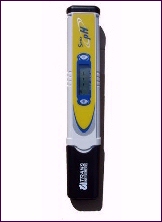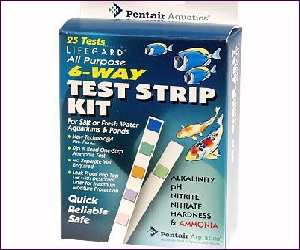PH levels. PH shock. Water test kit for ponds and water gardens |
How to maintain safe PH levels
PH levels for the garden pond should be checked regularly and maintained to ensure your fish and plants stay healthy. Make sure you change the PH levels little by little. Sudden changes can cause great stress to both fish and plants and even kill your fish. The easiest way to check PH levels is by using a water test kit which can be purchased at your local garden centre or pond store. Follow the instruction that come with the kit and always have a supply of the most common chemicals at hand. PH levels can be lowered by adding peat or vinegar. PH Increase and PH Decreaser are two products that you should always have at hand; it is important to follow the instructions on the package.
|

Digital PH tester
|
|
PH levels. PH shock
Water test kit for ponds
.
|
| PH Levels for Ponds and Water Gardens |
|
|
PH levels. PH shock. Water test kit for ponds
The PH level of pond water fluctuates slightly throughout the day. It's at its highest in the afternoon and lowest in the morning. Because of the fluctuations in PH levels, test pond water at the same time everyday.
What is PH?
PH is a measure of acidity and alkalinity. In an ideal world your pond should register a PH reading of 7.0 or possibly a little higher as this would mean the water is neutral, it is neither acid or alkaline. Ideally your pond should have PH levels of neutral or slightly basic (a little higher than 7.0). Most experts believe that PH levels should be between 7.2 and 7.8.
Signs of low PH levels: Pond water is too acid which is harmful to both plants and fish..
- Fish will come to the surface for fresh air.
- Fish will lose ability to fight disease.
- Pond plants show signs of stunted growth.
Signs of high PH levels: Ammonia levels are up.
- Fish will develop fungus and diseases
- Fish will loose their colour.
|
 Test strips for up to six items
Test strips for up to six items
|
PH shock
PH shock is a condition that can kill or seriously harm the pond fish. It is brought on by a rapid change of the PH levels of the pond water within too short of a time span. To prevent PH shock
- Do not decrease more than 0.5 PH units in 24 hours.
- Do not perform large water changes.
- When transporting fish in a plastic bag do not keep them in there for more then than 2 hours because when the bag is opened it can cause a rapid PH shift within 20 minutes as gases trapped in the water are released into the pond. This can seriously shock or kill the fish.
The amount of a sudden change of PH levels is tolerated differently by different species of aquatic life.
Signs of PH shock
Fish will become lethargic, they stop eating, their dorsal fin drops and they remain relatively motionless or rest on the substrate. Some may produce excess slime on their bodies and/or loose colour. Within a few days, if the PH shock continues, the fish will usually die. |
Water test kits
Test kits are affordable and may be purchased at your local garden centre, pond store, pet/aquarium store or on the Internet. Some kits use test strips, like the popular 5 in 1 test kit that test for Nirate, Nitrite, Hardness, Alkalinity, and PH. There is also a simple PH tester that has a liquid that you put one drop of into a vial of collected pond water. The tester liquid changes the color of the water and by comparing it to the kit's color chart, you can quickly tell the pH of the pond water. |
|
|
|